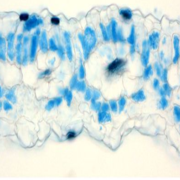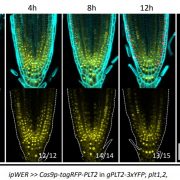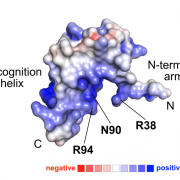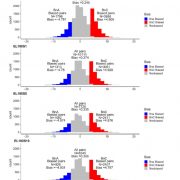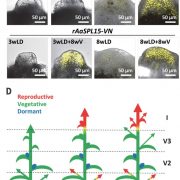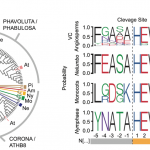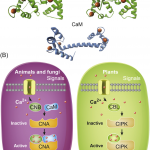Gene balance predicts transcriptional responses immediately following ploidy change in Arabidopsis thaliana (Plant Cell)
 Throughout evolutionary time polyploidization events have occurred frequently, increasing the gene copy number (gene dosage) of multiple angiosperms. The gene balance hypothesis proposes that there is selection on gene copy number to maintain the stoichiometric balance between dosage-sensitive genes that are involved in multimeric complexes (e.g., transcription factors). However, if a whole-genome duplication occurs the balance between genes in dosage-sensitive groups is maintained. Here, Song et al. utilize a comprehensive set of accessions to investigate the gene dosage response immediately following ploidy changes in Arabidopsis. The set consists of two diploid accessions, their synthetic autopolyploids, a natural tetraploid and its haploid-induced synthetic diploid. RNA-seq was conducted for each accession to measure the transcriptome size, altered expression levels, and gene dosage responses immediately following the ploidy level alterations. The authors observed that genome doubling did not precisely induce transcriptome doubling, suggesting that expression levels and gene copy number are not strictly correlated. Furthermore, the gene dosage responses were highly variable for many loci. Nevertheless, the expression levels for genes in dosage-sensitive groups (GO terms, metabolic networks etc.) were less variable, with more coordinated gene dosage responses than less sensitive groups, thus supporting the gene balance hypothesis. Dosage responses are not significantly more coordinated within the natural-tetraploid versus the new synthetic polyploids, which implies that selection on dosage balance occurs immediately following a polyploidization event and is subsequently sustained. Future proteomic analyzes will validate whether dosage responses are reflected at the protein level. Moreover, the gene balance transcriptional responses observed may relate to transposable elements, a mechanism that requires future elucidation. (Summary by Caroline Dowling) Plant Cell 10.1105/tpc.19.00832
Throughout evolutionary time polyploidization events have occurred frequently, increasing the gene copy number (gene dosage) of multiple angiosperms. The gene balance hypothesis proposes that there is selection on gene copy number to maintain the stoichiometric balance between dosage-sensitive genes that are involved in multimeric complexes (e.g., transcription factors). However, if a whole-genome duplication occurs the balance between genes in dosage-sensitive groups is maintained. Here, Song et al. utilize a comprehensive set of accessions to investigate the gene dosage response immediately following ploidy changes in Arabidopsis. The set consists of two diploid accessions, their synthetic autopolyploids, a natural tetraploid and its haploid-induced synthetic diploid. RNA-seq was conducted for each accession to measure the transcriptome size, altered expression levels, and gene dosage responses immediately following the ploidy level alterations. The authors observed that genome doubling did not precisely induce transcriptome doubling, suggesting that expression levels and gene copy number are not strictly correlated. Furthermore, the gene dosage responses were highly variable for many loci. Nevertheless, the expression levels for genes in dosage-sensitive groups (GO terms, metabolic networks etc.) were less variable, with more coordinated gene dosage responses than less sensitive groups, thus supporting the gene balance hypothesis. Dosage responses are not significantly more coordinated within the natural-tetraploid versus the new synthetic polyploids, which implies that selection on dosage balance occurs immediately following a polyploidization event and is subsequently sustained. Future proteomic analyzes will validate whether dosage responses are reflected at the protein level. Moreover, the gene balance transcriptional responses observed may relate to transposable elements, a mechanism that requires future elucidation. (Summary by Caroline Dowling) Plant Cell 10.1105/tpc.19.00832
[altmetric doi=”10.1105/tpc.19.00832″ details=”right” float=”right”]


